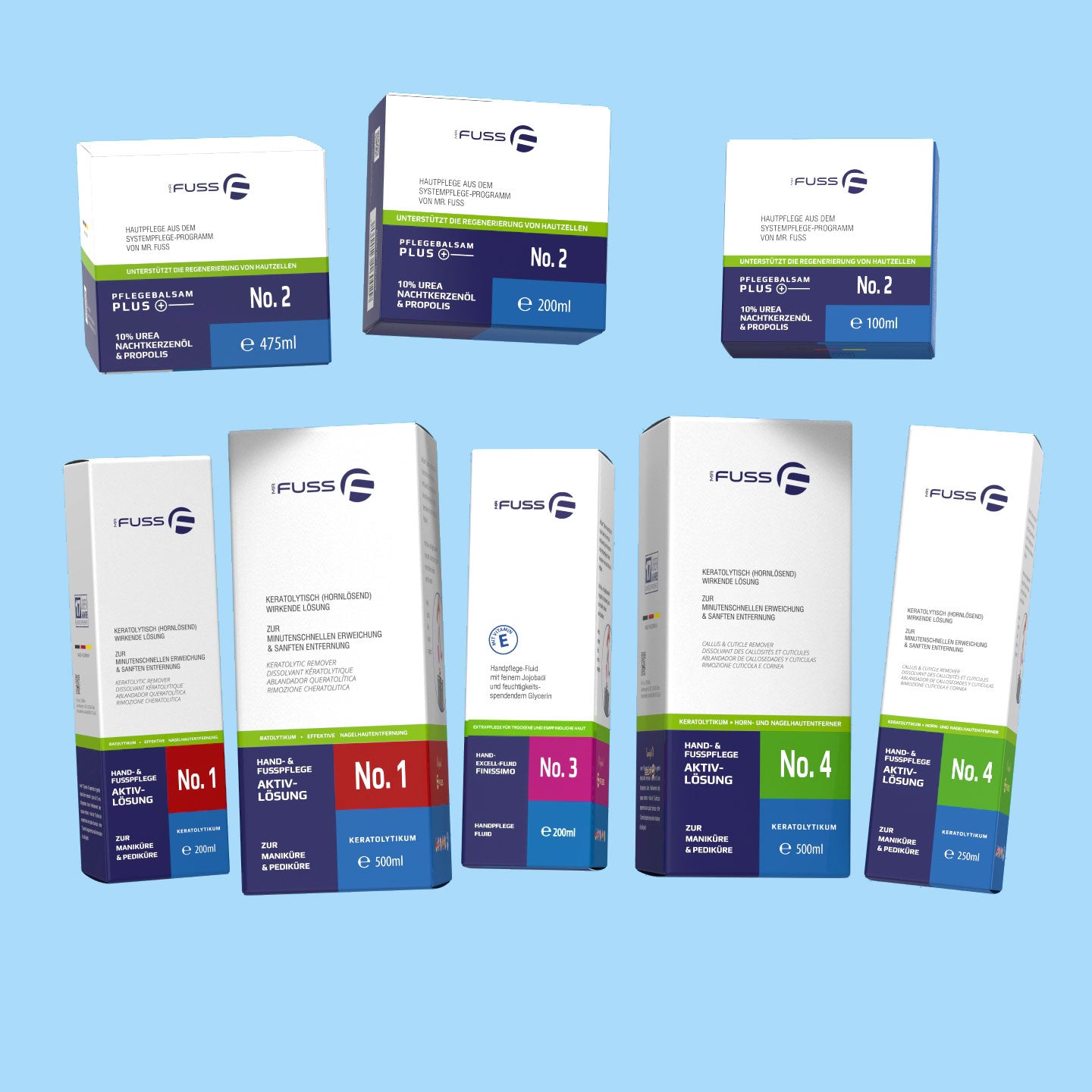dead skin removal through medical foot care
The same basic obstacles.
Someone who dedicates their profession to a subject should know how to do it, right? Yes, one would think so. Then in Germany, even in the field of foot care, there are 2 major professional fields that differ a little. The medical foot care (podology) and the cosmetic foot care. The name here already gives a bit of information about how the fields differ or where they differ from each other. While one, cosmetic foot care, essentially focuses on care from a cosmetic point of view, medical foot care is in demand when it comes to the nitty-gritty, i.e. specifically when it comes to treating real complaints.

Right and important, but unfortunately often the same problem so far, so good. Sure, it's a fine thing to be pampered by a professional or to be able to expect real help if you ever have to deal with problems. And to be clear right away, both professions offer valuable services and expert advice.
However, anyone who has already had a little look around this website may have guessed that, from the point of view of Mr. Fuss there is also a point, which one may regard with medical foot care and CO. quite critically. Unfortunately, even in most studios, although with elaborate technology, but still sanded and rubbed or even with the scalpel (so a blade) is used. In our opinion, these methods are unnecessary in most cases. Instead, grinding or planing also brings risks and rough skin. And if you take a close look at such a professional foot care center, you will find there the same foot care equipment as in the drugstore, only in a professional version: rasp, pumice stone and

What role should it play, then, if an electric hard skin remover grinding head rotates at up to 40,000 or just 1,800 revolutions per minute and grinds your skin with it?
Of course, a trained hand may be able to grind your skin more precisely and thus with less risk. blade but is the cutting edge of the blade smooth in the transition to the healthy skin?
By the way, anyone who has ever worked with a high-performance milling machine in the foot care of dead skin was freed, not infrequently reports that it was during the treatment smells like burnt skin, that it tingles and itches, and the skilled worker wears to protect dead skin-fine dust a respirator mask, but rarely the customers.
Has a bit of a car paint shop!
So, dead skin removal in studios it is usually the case that the usual methods are used, often with tools that are highly efficient for the moment, for example with dead skin-diamond cutters and maximum rotation. Without regard to the consequences, the rough skin that remains and the follow-up visit that is (therefore?) already registered. An old inside joke puts it this way:
Pay attention: the pedicurist never says goodbye, she always says "goodbye"!
Most of the time, however, doesn't always mean that either. And yes, there are also pedicure practices that work with Mr. Fuss and comparable methods of dead skin to the body. And if your own practice does not yet know this method, you can also point out as a customer quite times.
Mr. Fuss and that anti-callous, anti-regrowth system have stood for many years for a gentle, but extremely efficient method of dead skin removal. If you get started today, you can end the vicious cycle with rough or sharp tools tomorrow. To get started, we recommend:

